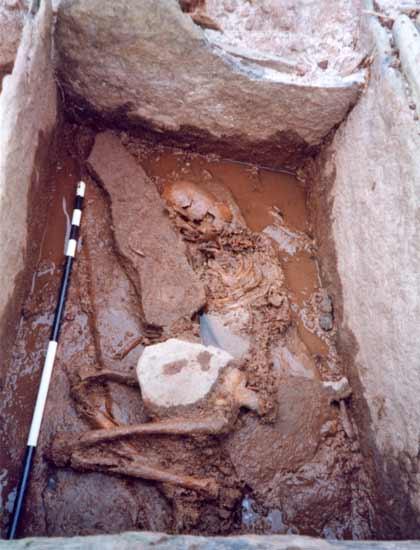Source - http://www.culture24.org.uk/history-and-heritage/archaeology/art542730-clan-gun-flints-dun-eistean-hebrides
Archaeologists scale cliffs to challenge view of clan island as being "on edge of the world"
 A Northern Lewis outpost occupyied a far more prominent position in the medieval Gaelic world than previously thought, say archaeologists© University of Glasgow
A Northern Lewis outpost occupyied a far more prominent position in the medieval Gaelic world than previously thought, say archaeologists© University of Glasgow
Archaeologists have revealed the results of a 15-year archaeological investigation into a tiny Scottish island, including the discovery of the earliest gun flints discovered in Britain, representing the first evidence of armed skirmishes on a Clan stronghold in the Hebrides.
 Gun flints were found on the Clan stronghold
Gun flints were found on the Clan stronghold
Surrounded by sheer cliffs, the island of Dùn Èistean is separated from Ness, at the northern tip of the Isle of Lewis, by a 15-metre wide gap. It was once the stronghold of the powerful Clan Morrison family which emerged during the 16th and 17th centuries, and experts say pottery and coins suggest it had contact with maritime trade routes rather than being an isolated landscape.
 Although the early years of the project posed “challenging” and “unique” logistical problems for the teams, the completion of a steel footbridge, commissioned by the global Clan Morrison Society in 2002, allowed easier access to Dùn Èistean.
Although the early years of the project posed “challenging” and “unique” logistical problems for the teams, the completion of a steel footbridge, commissioned by the global Clan Morrison Society in 2002, allowed easier access to Dùn Èistean.
Rachel Barrowman, of the University of Glasgow, says its inhabitants might have played an important role in policing passing sea traffic from a highly visible location, inviting repeated interaction with the wider world. A large assemblage of gun flints was also manufactured on the island.
We began this project with the aim of illuminating a period of history in Lewis and Harris that is not well-documented and subject to little archaeological research,” she says.
“It has taken many years and a huge amount of dedication from a number of people to get to this stage.
 This coin dates from the reign of Queen Elizabeth I © University of Glasgow
This coin dates from the reign of Queen Elizabeth I © University of Glasgow
“Through the combination of archaeological survey and excavation, together with detailed historical research, we have been able to tell the story of the development and use of the stronghold and gain an insight into its participation in the wider Gaelic world in the 1500s and early 1600s.”
The Ness Historical Society, Historic Environment Scotland and the Heritage Lottery Fund are among the key backers of the research.